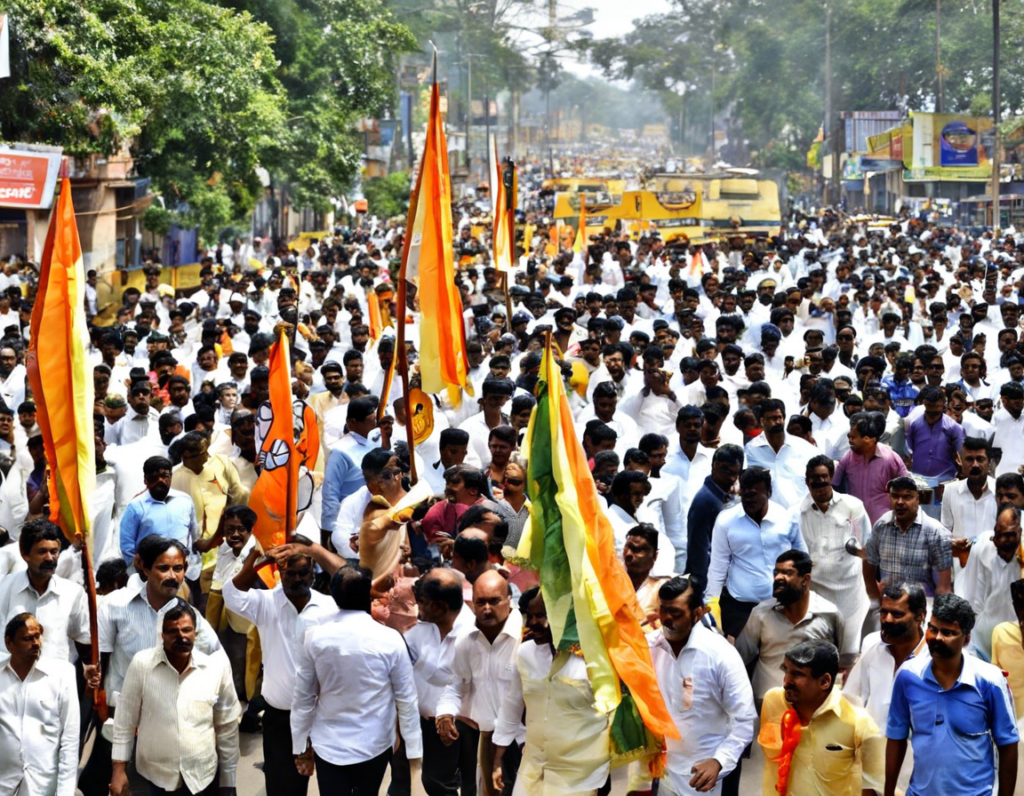Introduction
In recent years, bandhs have become a common form of protest in India, with various states witnessing shutdowns for a myriad of reasons. One such recent event was the Karnataka Bandh, which garnered attention due to its impact on the state. This article aims to provide an in-depth overview of the Karnataka Bandh, detailing its causes, impact, implications, and more.
What is a Bandh?
To begin with, it is crucial to understand the concept of a bandh. Originating from the Hindi word for ‘closed,’ a bandh is essentially a form of protest in India where a shutdown is observed in a particular area, be it a city, district, or an entire state. During a bandh, businesses, schools, and other institutions remain closed, and transportation services are usually disrupted.
Causes of the Karnataka Bandh
The Karnataka Bandh, like most bandhs, was called in response to certain grievances or issues faced by a particular group or community. Common reasons for calling a bandh include demands for social justice, political motives, economic concerns, or in protest against government policies. In the case of Karnataka, the bandh may have been called due to issues such as water disputes, farmers’ rights, linguistic differences, or ethnic tensions.
Timeline of the Karnataka Bandh
The Karnataka Bandh typically unfolds in a series of events leading up to the actual day of the shutdown. It starts with the announcement from the group or organization calling for the bandh, followed by mobilization efforts to garner support. This may include rallies, social media campaigns, and outreach to various stakeholders. On the day of the bandh, supporters are expected to participate in ensuring the shutdown is effectively observed.
Impact of the Karnataka Bandh
The impact of a bandh can be significant, affecting various aspects of daily life. Businesses incur financial losses due to the closure, daily wage workers suffer, and essential services may be disrupted. Additionally, the image of the state or region calling for a bandh may suffer, impacting tourism and investments. In the case of Karnataka, the bandh could have disrupted daily activities, transportation, and overall economic productivity.
Legal Implications and Responses
While bandhs are a common form of protest in India, they often raise questions about their legality and the government’s response. Various states have laws in place to regulate bandhs, with some banning them altogether. The authorities may take measures to prevent the bandh, such as increasing security, issuing prohibitory orders, or arresting those instigating the shutdown.
Public Opinion and Reactions
Public opinion on bandhs can be divided, with some supporting them as a legitimate form of protest and others criticizing the disruptions they cause. While bandhs can draw attention to important issues, critics argue that they harm the economy and inconvenience the public. Understanding the diverse opinions on bandhs is crucial in evaluating their effectiveness and consequences.
Future Implications and Considerations
As Karnataka and other states continue to grapple with various socio-political issues, bandhs are likely to remain a part of the protest landscape. It is essential for policymakers, civil society, and the public to engage in dialogue and find alternative ways to address grievances without resorting to bandhs. Long-term solutions addressing root causes are necessary to prevent recurring shutdowns and promote sustainable development.
Frequently Asked Questions (FAQs)
-
Are bandhs legal in India?
In India, the legality of bandhs varies by state, with some states having laws banning them. However, they continue to be a prevalent form of protest in many regions. -
How do bandhs impact the economy?
Bandhs can significantly impact the economy by causing financial losses to businesses, disrupting supply chains, and affecting daily wage workers. -
What role does social media play in organizing bandhs?
Social media has become a powerful tool for mobilizing support and spreading information about bandhs, making it easier for organizers to reach a wider audience. -
How do authorities respond to bandhs?
Authorities may respond to bandhs by increasing security, issuing prohibitory orders, and taking legal action against those instigating the shutdown. -
What are some alternative forms of protest to bandhs?
Alternative forms of protest include rallies, sit-ins, petitions, strikes, and engaging in constructive dialogues with authorities to address grievances.
Conclusion
In conclusion, the Karnataka Bandh and similar shutdowns reflect the complex socio-political landscape of India, where grievances are often expressed through various forms of protest. While bandhs can draw attention to critical issues, their impact on the economy and society cannot be overlooked. It is essential for all stakeholders to engage in constructive dialogue and seek sustainable solutions to address underlying problems. Only then can we move towards a more inclusive and equitable society where bandhs are no longer seen as a necessary means of protest.
